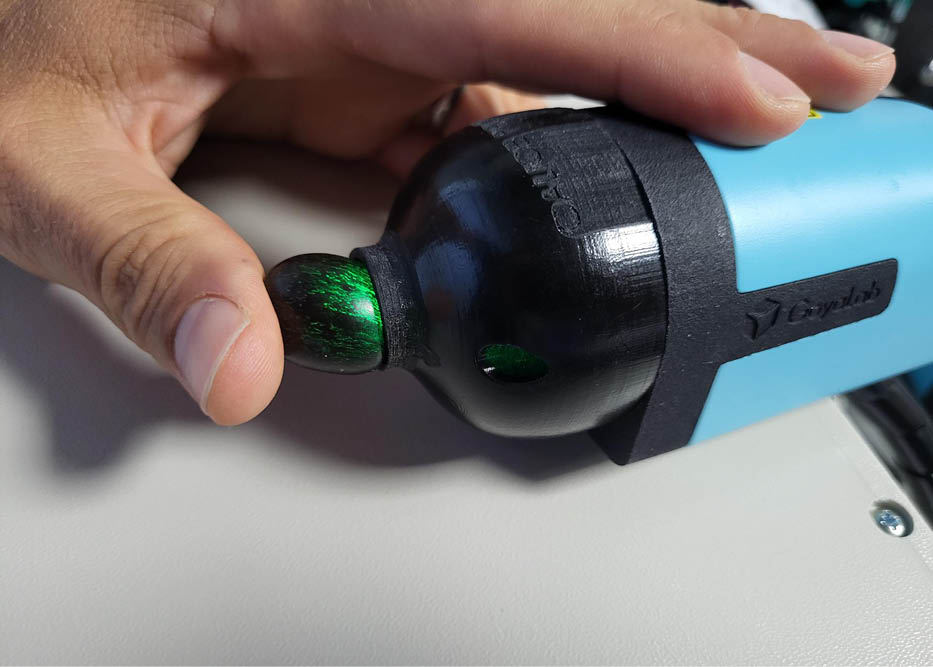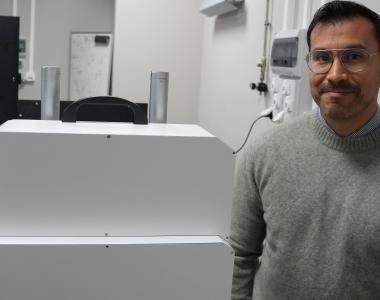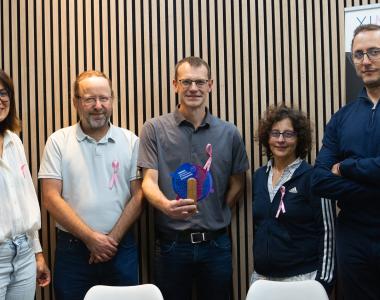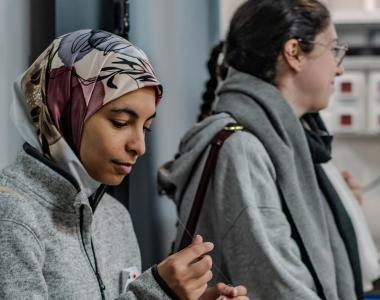News
CALICE - An all-in-one handheld sensor in the vineyard to better estimate harvest date
Started in 2023, the CALICE project aims to develop an all-in-one handheld sensor for the global evaluation of the technological and phenolic potential of grape berries at the vineyard plot level. Major advances have been made, paving the way for optimized viticultural practices.
Rethinking traditional methods of harvesting
Currently, grape maturity assessment is still largely based on traditional methods; berries are collected at regular intervals from different areas of the plot, then analyzed in the laboratory to measure key parameters such as sugar, acidity levels and anthocyanin concentration in the grapes. Although these methods are effective, they are time-consuming, costly and difficult to apply evenly across the entire plot, particularly given the variability in grape maturity from one bunch to another and from one vine to another.
The CALICE project, whose three partners are the Institut Français de la Vigne et du Vin (IFV), Goyalab and ALPhANOV, seeks to address this challenge by developping an all-in-one sensor capable of measuring these important parameters directly in the field, while facilitating decision-making. This approach would enable the wine industry to obtain accurate and reliable data on-site, without the need for laboratory analysis.

Grape berry analyzed by the prototype
The sensor's first successes in French vineyards
Since its launch, the project has made significant progress. In 2024, two prototype of sensors designed by ALPhANOV were manufactured and tested to measure anthocyanin levels in grape berries, using fluorometric methods.
Tests were carried out at two IFV centers in two regions, Nouvelle-Aquitaine and Occitanie, with emblematic grape varieties such as Merlot and Cabernet-Sauvignon. These trials were carried out on 4 different dates, between August and October 2024, in order to monitor changes in grape maturity over time.
Although the measured signal was noisy at certain points, post-analytical processing enabled accurate and reliable results. The data showed a good correlation with laboratory results from the Institut Français de la Vigne et du Vin (IFV), confirming ALPhANOV sensor's effectiveness under real-life conditions.
In addition, the collaboration between IFV, ALPhANOV and Goyalab has proven to be a real asset to the project. The synergy between the teams has enabled rapid and convincing results, reinforcing the feasibility and relevance of the project.

In the coming months, the CALICE project team plans to develop version 2 of the sensor, more compact and specifically designed for handheld use whithin vine rows. This new version will be put to the test during the 2025 harvest, as part of the second test campaign. Meanwhile, the teams will focus on implementing AI-powered calibration models, in order to optimize the analysis of harvested data and provide winegrowers an even more powerful decision-making tool.



